Sea Surface Temperature: 40 F
Sea State: 2 foot seas
Too Much Ice

The Norseman II is beating a retreat from the Beaufort SeaThe Beaufort Sea lies to the north of Alaska and the Yukon and Northwest Territories.. Our original plan was to sample along several transect lines into the far north off of the continental shelf. However, there was too much ice to be able to safely do the northern sections of the lines. We modified our plan to do three shorter lines in the Beaufort sea, to better understand the bed of Alexandrium cysts bed near Barrow Canyon while avoiding the sea ice. We started the first of these lines, Barrow Canyon Outflow, on the afternoon of August 7th. From the start, ice was visible on the horizon. After a flurry of discussion, Bob and Casey decided that we would sample northward along the line until there became too much ice to continue. We made it to the final station along this line, but at this point there was too much ice for comfort. The decision was made to head south. Now we are steaming back through the Chukchi Sea, on our way to better understand the cyst bed in Ledyard Bay.

Who's Who on the Norseman II?
Kate
Often found filtering water samples or studying IFCB data, Kate is the Pseudo-nitzschia expert on board. A research biologist for the Florida Fish and Wildlife Research Institute, Kate has been studying “pseuds” for 20 years. On land, Kate leads a research team that focuses on all aspects of harmful algae, a serious issue in Florida. Her job involves monitoring phytoplankton blooms, responding to serious blooms, and doing research. No two days are ever the same. She says, “I might be talking to politicians, talking to the public, working with my team on a new project, writing summaries for governor, or going in a helicopter or plan to scout for blooms.”
Noticing the seasonal and year-to-year changes on the Saint Lawrence River in New York sparked Kate’s interest in science. In college, she majored in biology but liked all the sciences. In fact, she became an oceanographer because it includes a little bit of every science.
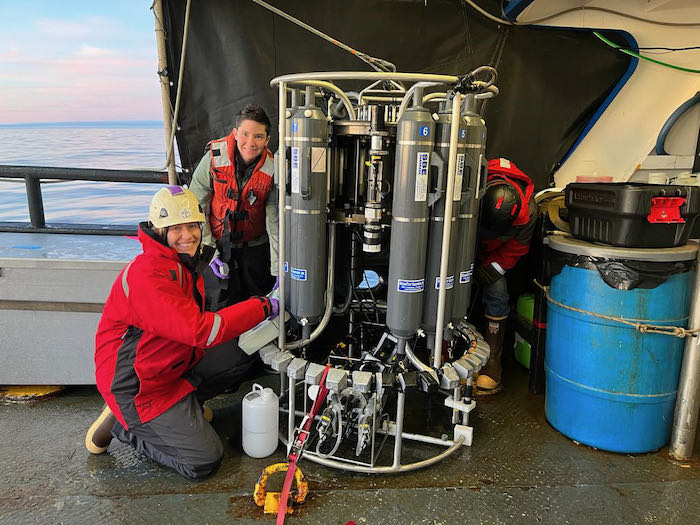
Josh
The self-described “fairy godmother” of the Norseman II, Josh’s role as deckhand means that he steps up wherever he is needed. During the course of a 12-hour shift, he might work on deck, drive the boat, help in the engine room, heat up midnight rations for the night shift, or deliver a safety briefing. He was the Alaska State Wrestling Champion at weight 171 in 2021 and graduated from high school in 2021. After graduating, he was unsure what he wanted to do. He had spent summers in high school working on commercial and charter fishing boats, so he applied to Support Vessels of Alaska. To qualify to work on board, he took a one month AB course at AVTEC in Seward, which involved one week of basic training, one week of proficiency in survival craft, and two weeks of Able Bodied Seaman certification.
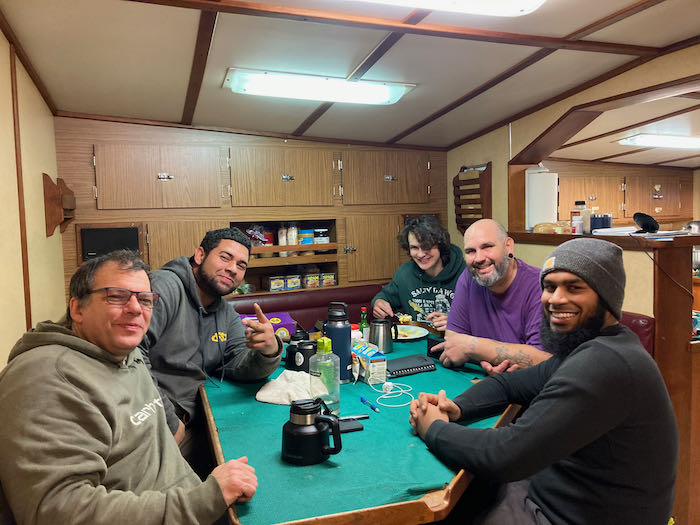
Ben
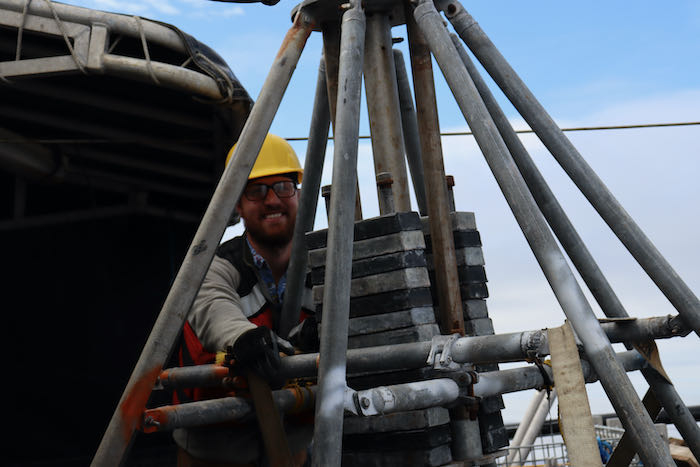
If you have a question about trout fishing, deer hunting, or deep-sea coring, Ben is the person to ask. A faculty research assistant at Oregon State University, Ben gets to work on a lot of different projects, including building buoys for measuring waves, currents, and other water properties, driving a forklift, and going to sea in various boats to deploy, check on, or retrieve equipment. He didn’t know this job existed until he went to school to study geology and sailed on a few research trips. Those research trips gave him the experience to apply for a research assistant position after he graduated.
Onboard the Norseman II, he helps with coring, fixes the Smith-McIntyre grab when it doesn’t work, and helps out on deck with the CTDA research tool that is submerged in the water to measure conductivity (salinity), temperature, and depth. and other instruments.
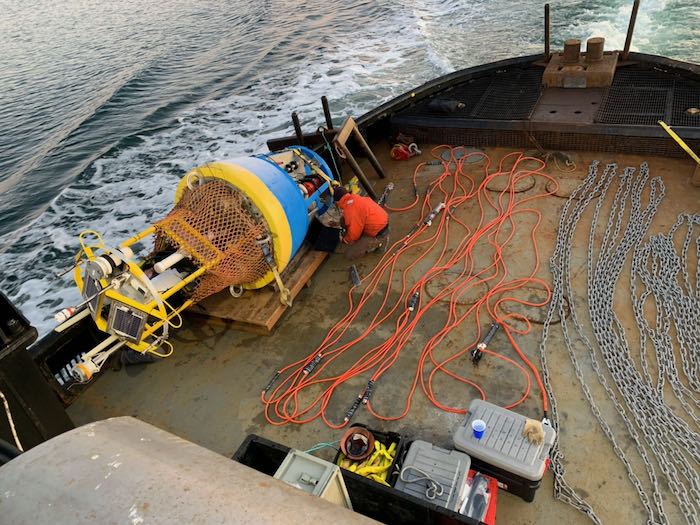
Casey
Casey is the captain of the Norseman II, responsible for the safety of the vessel and all souls on board. Wind and sea conditions can make things really bad in a hurry, so he is constantly monitoring the weather, as well as making sure everything runs smoothly, setting up logistics, communicating with the scientists, and driving the boat for a 12-hour shift.
Casey started going out on his dad’s fishing boat at age 5. By the time he got to his senior year in high school, he knew he wanted to be on the water as a career, but he wasn’t sure how to go about it. At a friend’s suggestion, he called up a tugboat company and asked “what do I need to do to go work for you guys.” They recommended for him to study at California Maritime Academy. Four years later, he had graduated with a captain’s license. With this in hand, he worked for a tugboat company in Valdez, AK, starting as a deck hand and and working his way up to chief mate.
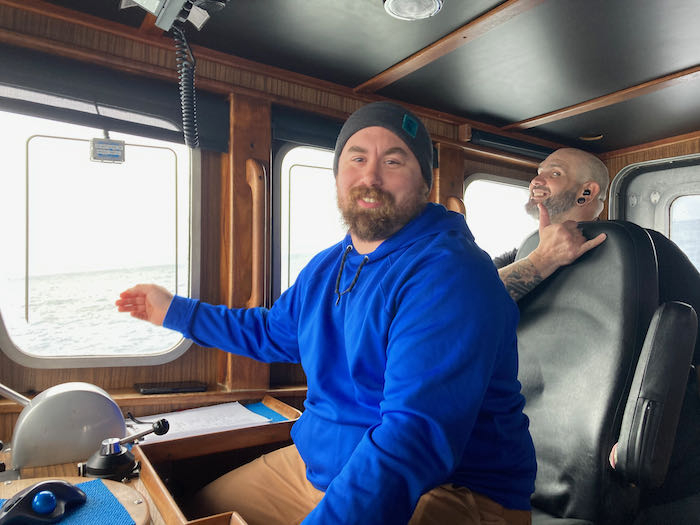
Kit
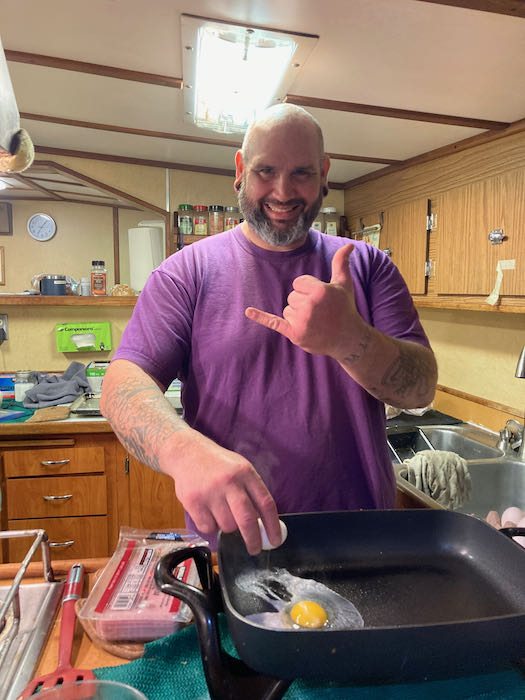
The person most responsible for the happiness of everyone on board is Kit, the fearless cook. The most excited person to discover the invertebrates in the sediment grabs, Kit is the Chief Motivator, Biggest Cheerleader, and All-around Class Clown.
I asked him how he started working on boats, and he replied, “I had no idea anything like this was even a possibility for me.” He tried out different jobs including construction, before finding a job on overnight deluxe charter fishing boats, helping clients catch yellowfin tuna. That job led other boats, and eventually to his current job in Alaska. He had a pretty fantastic introduction to Alaska as he arrived to his first posting for SVA on a chartered float plane. In the future, he hopes to get his able bodied seaman and captain’s licenses.
In his spare time, he likes to grow dragonfruits.
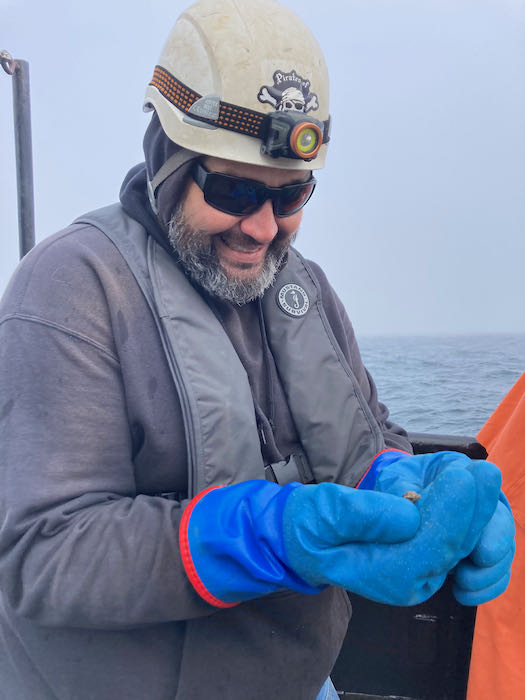
Bob
A research cruise is carefully planned out to collect as much data as possible during the short amount of time we have at sea. However, sea conditions are always changing, throwing carefully laid plans out the window. Bob is the chief scientist, and his role is to look at the weather, the ice, how fast we are getting work done, and how fast the ship is moving in order to make sure that the cruise is progressing the way it should. He looks at the big picture and has be thinking 1-2 days into the future in order to maximize our time. Doing this involves communicating with the captain and first mate (sometimes in the middle of the night), scrutinizing weather reports, and checking satellite images of sea ice sent from scientists at Woods Hole. A physical oceanographer by trade, Bob analyzes data when on land and goes on a few cruises every year.
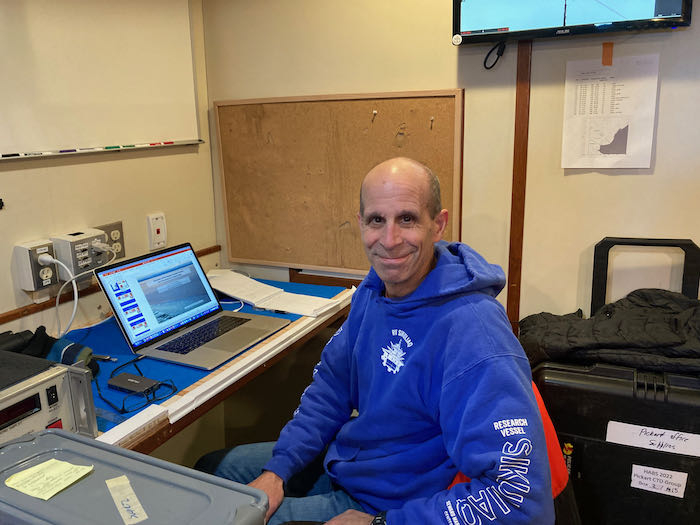


Comments